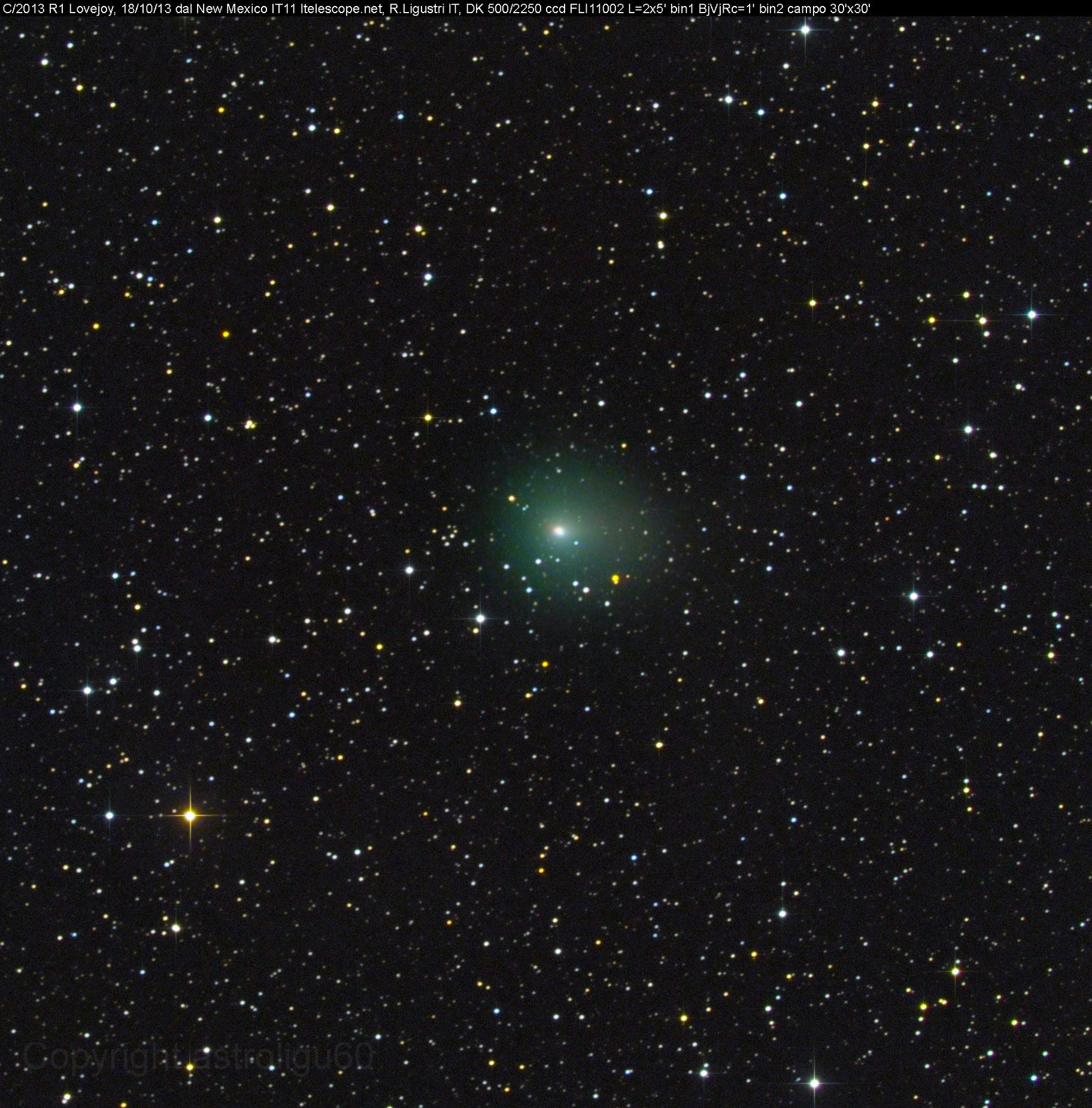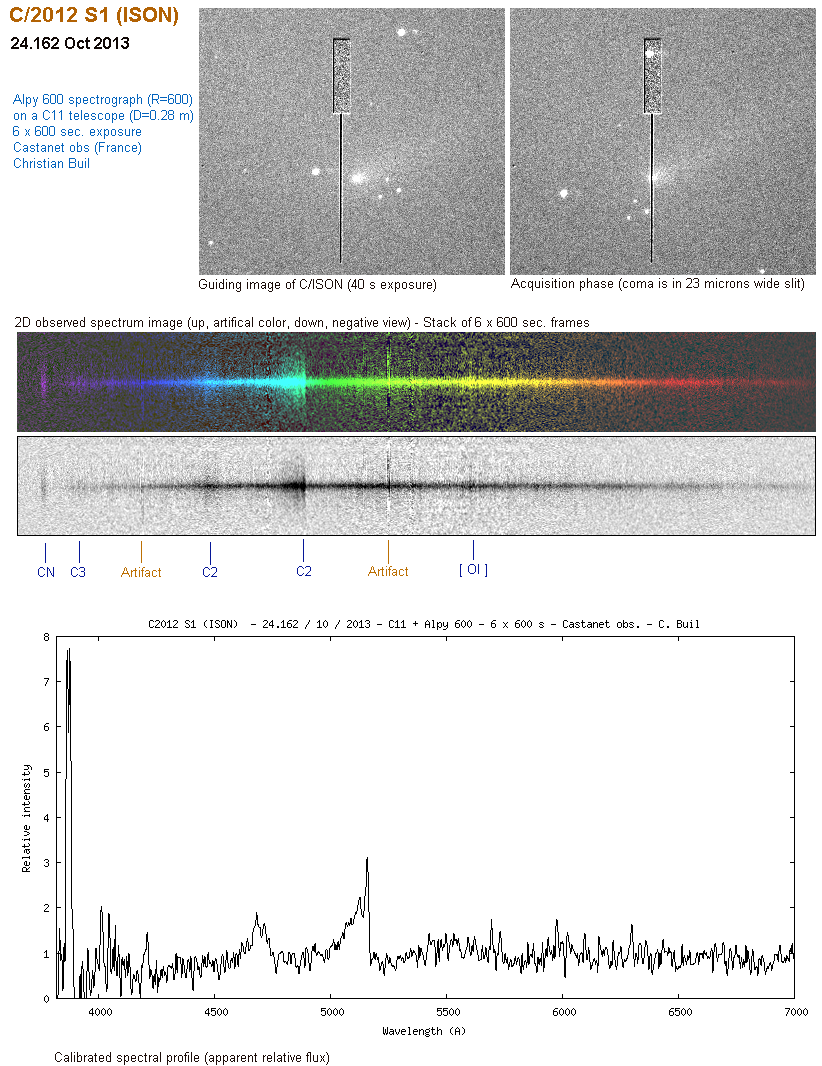It looks like you're using an Ad Blocker.
Please white-list or disable AboveTopSecret.com in your ad-blocking tool.
Thank you.
Some features of ATS will be disabled while you continue to use an ad-blocker.
share:
Unity_99
Update: ISON interacts with Mars
Kind of alarming, but Electric Universe stuff. The comet has a charge and they interact electrically, this changes Ison to green ,changing some chemisty, hopefully not the toxic change green implies but quite possibly.
And, mars becomes a comet for a while.
Second time encountering this now. With the radio interview, and some captured shots here from someone.
I hope this didn't happen, that this is somehow put out by sorcha or some disinfo, because I don't like it one bit.edit on 5-10-2013 by Unity_99 because: (no reason given)
Early October is when ison was supposed to fly by mars.
So is this why the rover is there?
Is that why the Goobermint is shut down........n@$a down as well?
Are they watching ison up close and in HD cams?
Is this why we have crazy on the stupidbox to distract us?ight hand
Left hand waves while right hand flips the tweety bird?
Makes one wonder.
www.spaceweather.com...
Are we going to get dusted by its tail? Never mind it seems to have a nice active charge on it!
ISON's green color comes from the gases surrounding its icy nucleus. Jets spewing from the comet's core probably contain cyanogen (CN: a poisonous gas found in many comets) and diatomic carbon (C2). Both substances glow green when illuminated by sunlight in the near-vacuum of space.
Are we going to get dusted by its tail? Never mind it seems to have a nice active charge on it!
reply to post by 0bserver1
Yeah because the websites going down has nothing to do with the worldwide news that the US government closed down.
Yeah because the websites going down has nothing to do with the worldwide news that the US government closed down.
The "other comet of 2013", C/2013 R1 (Lovejoy), is also green: www.astrobin.com...

Photo by Rolando Ligustri, taken on Oct 18th.
Should be a nice binoculars object in the second half of November.

Photo by Rolando Ligustri, taken on Oct 18th.
Should be a nice binoculars object in the second half of November.
ISON's green appearance explained at www.isoncampaign.org... :
You may have noticed that Comet ISON appears to have a green halo in some recent images (like that opposite), but in other images acquired at about the same time, it doesn’t. Thanks to the beautiful new spectrum posted earlier today by Christian Buil, it’s relatively easy to understand why.
The light we see from a comet is a combination of sunlight reflected off of dust grains (often called “continuum” by astronomers) and light emitted by molecules when they are hit by UV sunlight (“emission”). The emission that is visible to the human eye and to most optical telescopes is in the “visible” part of the electromagnetic spectrum, from roughly 3800 to 7600 Å. The most prominent emission by comets in this region occurs due to the emission of CN (cyanogen), C2 (two carbon atoms), and C3 (three carbon atoms), as illustrated nicely in Christian Buil’s spectrum:

As you can see in the profile (the plot at the bottom that says relative intensity), there are big peaks in the spectrum around 4700 Å and 5100 Å. These are due to C2. You may remember from high school science classes that the human eye is most sensitive in the green region of the spectrum, roughly between 5000 and 6000 Å (sorry the units are changing between plots; 10 Å = 1 nm, so 5000 Å = 500 nm). Since this is also where the C2 emission is strongest, your eye really notices a lot of green and, voila, a green comet!
If you just want to know why comets often look green, you can stop reading now. It'll get a bit more technical from here on out..
In astronomy, most CCD cameras use filters that only let certain wavelengths of light through. Adam Block created his spectacular image where the comet looks green by combining images taken in three filters roughly corresponding to red (R), green (G), and blue (B). These combine to make a color picture similar to what your eye sees. Returning again to Christian Buil’s spectrum, there is almost no emission in the red region (roughly 6000 to 7000 Å), there is a lot of emission in the green region (roughly 5000 to 6000 Å), and there is some emission in the blue region (roughly 4000 to 5000 Å). Thus, when these are combined the green color dominates and you see a green comet1.
Many images of comet ISON are taken with the R (red) filter. As I just noted, this region is relatively free of emission, so most of the light from the comet is due to dust reflecting sunlight. Thus, an R image (like the image by Nick Howes et al.) primarily shows the comet’s dust.
One really nice application of this is that by careful consideration of where to make filters transparent, astronomers can isolate either dust or gas emission, and therefore can study particular features of the comet. My primary work utilizes this principle, and we have “comet narrowband filters” specially designed to look at CN, C2, C3, dust, and a few other things. My preferred gas to study in comets is CN. As you may have noticed in the spectrum above, there is a really tall and narrow peak near 3900 Å that corresponds to CN. CN emission Is really bright, however, we don’t normally “see” comets looking blue for several reasons: our eyes aren’t very sensitive to that short of a wavelength, the atmosphere absorbs light more efficiently at short wavelengths, and many CCD cameras are not designed to be sensitive there. If you have a telescope and CCD setup that can actually observe it, CN is a very good way to look for gas activity in comets!
You may have noticed that Comet ISON appears to have a green halo in some recent images (like that opposite), but in other images acquired at about the same time, it doesn’t. Thanks to the beautiful new spectrum posted earlier today by Christian Buil, it’s relatively easy to understand why.
The light we see from a comet is a combination of sunlight reflected off of dust grains (often called “continuum” by astronomers) and light emitted by molecules when they are hit by UV sunlight (“emission”). The emission that is visible to the human eye and to most optical telescopes is in the “visible” part of the electromagnetic spectrum, from roughly 3800 to 7600 Å. The most prominent emission by comets in this region occurs due to the emission of CN (cyanogen), C2 (two carbon atoms), and C3 (three carbon atoms), as illustrated nicely in Christian Buil’s spectrum:

As you can see in the profile (the plot at the bottom that says relative intensity), there are big peaks in the spectrum around 4700 Å and 5100 Å. These are due to C2. You may remember from high school science classes that the human eye is most sensitive in the green region of the spectrum, roughly between 5000 and 6000 Å (sorry the units are changing between plots; 10 Å = 1 nm, so 5000 Å = 500 nm). Since this is also where the C2 emission is strongest, your eye really notices a lot of green and, voila, a green comet!
If you just want to know why comets often look green, you can stop reading now. It'll get a bit more technical from here on out..
In astronomy, most CCD cameras use filters that only let certain wavelengths of light through. Adam Block created his spectacular image where the comet looks green by combining images taken in three filters roughly corresponding to red (R), green (G), and blue (B). These combine to make a color picture similar to what your eye sees. Returning again to Christian Buil’s spectrum, there is almost no emission in the red region (roughly 6000 to 7000 Å), there is a lot of emission in the green region (roughly 5000 to 6000 Å), and there is some emission in the blue region (roughly 4000 to 5000 Å). Thus, when these are combined the green color dominates and you see a green comet1.
Many images of comet ISON are taken with the R (red) filter. As I just noted, this region is relatively free of emission, so most of the light from the comet is due to dust reflecting sunlight. Thus, an R image (like the image by Nick Howes et al.) primarily shows the comet’s dust.
One really nice application of this is that by careful consideration of where to make filters transparent, astronomers can isolate either dust or gas emission, and therefore can study particular features of the comet. My primary work utilizes this principle, and we have “comet narrowband filters” specially designed to look at CN, C2, C3, dust, and a few other things. My preferred gas to study in comets is CN. As you may have noticed in the spectrum above, there is a really tall and narrow peak near 3900 Å that corresponds to CN. CN emission Is really bright, however, we don’t normally “see” comets looking blue for several reasons: our eyes aren’t very sensitive to that short of a wavelength, the atmosphere absorbs light more efficiently at short wavelengths, and many CCD cameras are not designed to be sensitive there. If you have a telescope and CCD setup that can actually observe it, CN is a very good way to look for gas activity in comets!
new topics
-
Joe Rogan conspiracy (maybe)
ATS Skunk Works: 24 minutes ago -
Results of the use of the Oreshnik missile system in Dnepropetrovsk
World War Three: 2 hours ago -
Nigel Farage now the Most Favoured UK Politician
Regional Politics: 4 hours ago -
Little Johnny and Larry should team up
General Chit Chat: 10 hours ago -
Will Us use alien technology to fight in ww3?
World War Three: 11 hours ago
top topics
-
Results of the use of the Oreshnik missile system in Dnepropetrovsk
World War Three: 2 hours ago, 10 flags -
Little Johnny and Larry should team up
General Chit Chat: 10 hours ago, 8 flags -
Shane Gillis commercial
Jokes, Puns, & Pranks: 17 hours ago, 4 flags -
Will Us use alien technology to fight in ww3?
World War Three: 11 hours ago, 2 flags -
Nigel Farage now the Most Favoured UK Politician
Regional Politics: 4 hours ago, 2 flags -
Joe Rogan conspiracy (maybe)
ATS Skunk Works: 24 minutes ago, 0 flags
active topics
-
President-Elect TRUMP Picks Former Florida A.G. PAM BONDI to be U.S. Attorney General.
2024 Elections • 49 • : VariedcodeSole -
Results of the use of the Oreshnik missile system in Dnepropetrovsk
World War Three • 68 • : RussianTroll -
Will Us use alien technology to fight in ww3?
World War Three • 11 • : BeyondKnowledge3 -
A Mysterious Orb filmed over NYC by local news
Aliens and UFOs • 25 • : ArMaP -
The Popular Vote does not matter
Political Issues • 14 • : texas thinker -
Well we know Putins ICBMs won't fail in their silos
World War Three • 188 • : Xtrozero -
Joe Rogan conspiracy (maybe)
ATS Skunk Works • 0 • : AlroyFarms -
Shane Gillis commercial
Jokes, Puns, & Pranks • 2 • : Flyingclaydisk -
President-Elect DONALD TRUMP's 2nd-Term Administration Takes Shape.
Political Ideology • 236 • : xuenchen -
Little Johnny and Larry should team up
General Chit Chat • 2 • : texas thinker
